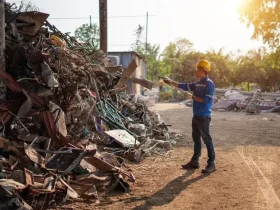Everyone knows that plastics make modern life possible, from the computer or cell phone you’re reading this on to the cup of coffee you’re enjoying while reading.
Plastic is ubiquitous — it’s in water bottles and food packaging. Other plastics, on the other hand, are more recyclable than others. Knowing which plastics can be recycled decreases waste and encourages more effective environmental decisions.
This short explainer will show you how plastics are sorted, what those little numbers inside the triangle mean, and what you can do to help ensure a cleaner planet.
What Are SPI Codes?
Each plastic item will have a number inside the recycling triangle. This number is a part of the SPI (Society of the Plastics Industry) coding system. It determines the makeup of the plastic.
These codes assist recycling plants in sorting materials more efficiently. If you’ve ever wondered which plastics you can recycle, this is your starting point: the SPI code.
The 7 Different Types of Plastics: What You Need to Know
Here is a look at seven of the most common plastics and whether they can be recycled:
PET (Polyethylene Terephthalate)
- Found in: Water bottles, salad containers
- Info: Easily recyclable
- Can be recycled into: T-shirts, carpet, new containers
HDPE (High-Density Polyethylene)
- Found in: Milk jugs, detergent containers
- Info: Widely recycled and very durable
- Can be recycled into: Plastic lumber, park benches, piping
LDPE (Low-Density Polyethylene)
- Found in: Grocery bags, cling film
- Info: Accepted less frequently in curbside programs
- Can be recycled into: garbage can liners and furniture
PVC (Polyvinyl Chloride)
- Found in: Pipes, window encasements, credit cards
- Info: Seldom accepted because of chemical problems
- Can be recycled into: Flooring, paneling
PP (Polypropylene)
- Found in: Food containers, straws, autos parts
- Info: Recyclable in some areas
- Can be recycled into: Battery cases, Traffic signals
PS (Polystyrene)
- Found in: Foam cups, to-go boxes
- Info: It is difficult to recycle, and it is harmful to the environment
- Can be recycled into: Insulation or crafting supplies
Other (Mixed Plastics)
- Found in: CDs, sunglasses, electronic casings
- Info: Hardest to recycle
- Can be recycled into: Recycled plastic lumber or discrete components
Making Smarter Plastic Choices
The most widely recycled plastics are those bearing the numbers 1 (PET) and 2 (HDPE). Numbers 3 through 7 tend to be harder to recycle and may be incinerated or landfilled.
Tips to recycle better:
- Look at the SPI number before throwing something
- Before using container in the bin, clean them
- Limit use of disposable plastics as far as possible
The Role of General Kinematics
By virtue of its comprehensive product line, General Kinematics is in a position to assist the recycling industry in remaining ahead of the curve in terms of sorting and processing recyclables. Spots heat up technology that drives low-emission facilities, making it easier to extract usable materials from commingled waste flows.
Final Thoughts
Understanding the type of plastics, recycling helps us to be more responsible in our choice of containers. All of us can help to work to a healthier planet, by identifying SPI codes and recycling responsibly. In the hands of reputed companies, the future of recycling is smarter, cleaner, and more sustainable.












